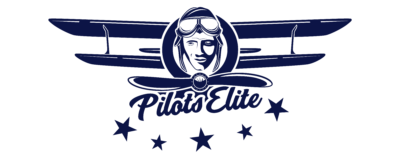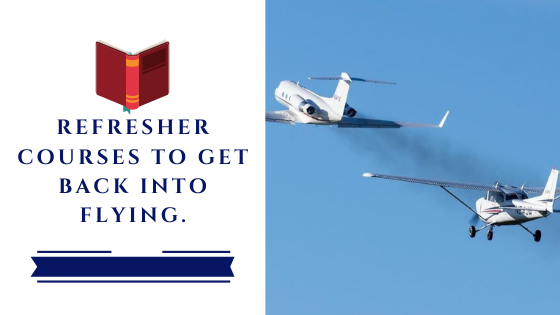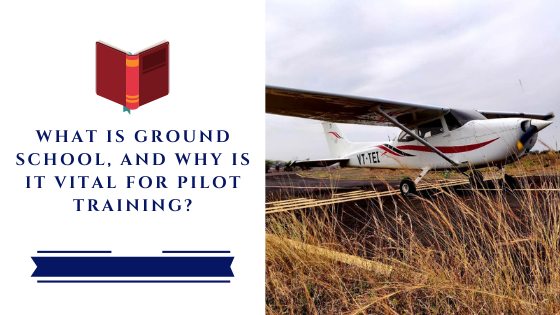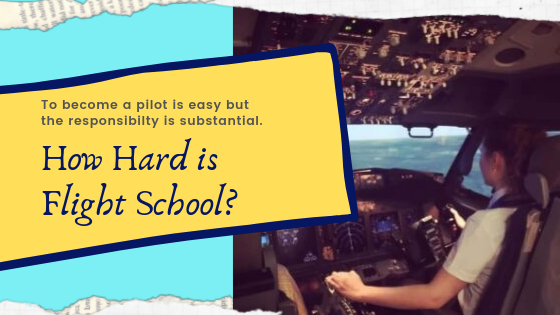13 Common and Worst Student pilot MISTAKES to avoid.
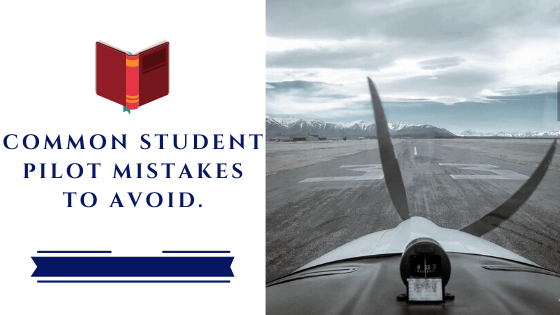
Want some heads up on the worst student pilot mistakes before you begin flying?
Knowing how to avoid mistakes during your flight training will ease your flying massively.
As a result, you will learn quickly and become a better pilot.
In this article, I have listed 13 student pilot mistakes that are most common and errors that will affect your flight training in various ways.
14. Not studying and preparing enough for the flight.
As a new student pilot, I mistakenly believed flying was easy and fun.
I expected flying to be as simple as driving a car.
That, in reality, is not the story.
I did not study enough until I faced lousy weather, and my flight instructor grew irritated with me.
Why did my flight instructor get annoyed?
He asked me a few questions concerning the weather, and I barely gave him any correct answers. He told me to study well at home and answer all the questions during the next flight.
He precisely said this:
“I will ask all those questions on your next flight again, so be prepared.”
I am not flying with you if you cannot answer me.
Well, that is the first mistake every student pilot makes. They do not consider flying as a full-time course.
They do not take studying seriously. Student pilots think that all they need to learn is during the flight.
Indeed, you will learn so many things during your actual flight. However, there are necessary basics which you have to learn from reading your books.
You cannot only rely on practical flying to learn.
Which is better, do you think?
Are you learning from your mistakes or learning before performing a blunder? Comment below.
I consider education by reading books as important as learning from your flight.
13. Poor weather briefing.
Speaking about the weather earlier reminded me of this:
Student pilots make the mistake of not reading the temperature from the actual radar.
Do not just monitor the climate of your departure airport before takeoff.
Use online weather services to find the weather en route and your destination airport.
Learning about the weather at your alternative airport is crucial, too.
You do not want to choose an alternative airport if it has terrible weather.
A glance at the destination airport’s online weather report will not take more than five minutes.
Five minutes can save you a lot of hassle.
From my experience, I can say that studying the weather conditions en route can be a waste of time and money.
It is your call once you check the weather status, whether it is a go or a no-go situation.
I was too stubborn and once took off in bad weather. I flew only for 20 minutes and got back to my departure airport.
Why is that?
I faced heavy rainfall and low clouds en route to my destination airport, which was unsuitable for a Cessna 172. I decided to return to the airport immediately before the situation worsened.
And many student pilots make this mistake repeatedly.
But I hope you will be smart enough to check the weather every time before you take off.
12. Not acknowledging the significance of preflight inspection.
New student pilots are always very excited to get up there.
I know spreading your wings is fun.
In the excitement of flying, student pilots underestimate the importance of preflight inspection.
Preflight inspection is crucial for conducting a safe flight.
Rushing through the inspection and not examining whether everything in the aircraft is excellent can be fatal.
Imagine you missed out on checking the engine oil level during the preflight inspection.
That will cause your engine to overheat during flight and even fire.
So, to become a safer pilot, take time and do your preflight inspection patiently according to the checklist.
11. Not using the checklist.
New student pilots fail to recognize that the checklist has a purpose.
The aircraft manufacturer did not make the checklist to keep it on your bookshelf.
Many new student pilots go on the flight without carrying a checklist.
YES, you can find a checklist inside the aircraft. Yet carrying your checklist will not harm you.
Use the checklist exactly before, during, and after your flight.
All procedures in the checklist have their design.
If a procedure did not merit, the manufacturer would probably not worry about adding that to the checklist.
Following the checklist will ease your flight and allow you to conduct a safe trip.
10. Not using airport diagrams.
It is a typical mistake student pilots make not having an airport diagram.
If you do not have an airport diagram or you did not study the airport diagram, you will be confused inside the airport.
Not knowing the airport map can become a nightmare, especially if you are a new pilot and traveling to a new destination for your cross-country flight.
The situation will worsen if you fly to a big, controlled airport with many taxiways.
So studying and memorizing the airport map can help you a lot, and you will have fewer headaches during taxing.
Study the airport diagram of your local airport and your destination airports.
9. Not using enough rudder.
New student pilots make the mistake of not putting enough pressure on the rudder.
Putting enough pressure on the right rudder during takeoff and landing is vital.
Why is that?
Several factors cause the airplane to turn left during takeoff and landing.
So you do not want to drift to your left immediately after takeoff.
If you are a new student pilot and drift to the left of the runway after takeoff, you will tend to over-control the airplane.
Look at the turn coordinator often and keep the ball centered during the whole leg of your flight.
Get used to using the rudder. Knowing how to use the rudder efficiently will aid you in better landings.
8. Over-controlling the airplane.
Over-controlling the airplane? YES, that is another standard error made by student pilots.
Initially, student pilots, including myself, tend to have a death grip on the yoke.
New student pilots try to maneuver the airplane with all their strength.
As a result, they end up over-controlling the airplane.
And over-controlling will cause all the new student pilots to overshoot their desired altitude and attitude.
Do not have a death grip on the yoke. Control the stick as smoothly as you can.
The more fluid you are with the controls, the higher the airplane’s response instead of reacting.
7. Mismanaging trim.
Another mistake is not using the trim properly.
Mismanaging the trim will cause stress for new student pilots inside the cockpit.
Using the trim properly will make controlling the airplane a lot easier.
If you learn how to use the trim regularly, you will notice that the airplane is flying by itself without you having to hold the controls all the time.
Practice trimming the aircraft more often, and you will enjoy the flight even more.
6. Staring inside the cockpit.
If you want to feel the beauty of flying, you must watch outside the aircraft.
Another mistake student pilots make is fixing their gaze on the instrument panel inside the aircraft.
Well, your initial flight training is all VFR. So, you are supposed to fly the aircraft with visual reference outside and not by looking at the instrument panel.
You can fly using the instrument panel in the future. But now, it is time to learn how to operate the aircraft by staring outside the cockpit.
There is an excellent book by ASA that teaches visual flying outstandingly.
So stop looking inside the cockpit for so long; fancy viewing outside.
You will have to look at the six necessary instruments occasionally for safety, but fixating your gaze inside is not what you must do.
5. Poor radio communications.
Not knowing how to communicate during a flight is a student pilot’s mistake.
For a safe flight, proper communication is necessary.
Communication will help you to avoid traffic and avoid congestion at the airport.
More importantly, having proper communication over the radio will save your life.
Learn to communicate properly. New students are too shy to talk or may not be confident.
But get out of your comfort zone and do the conversation yourself.
Practice will improve you, and you will get used to communicating with the tower.
If you fly to a congested airport, you may get overwhelmed by all the information, but do not get nervous; ask your air traffic controller to repeat it.
They are there to help, and they will happily assist you.
The air traffic controller’s job is to keep the airspace safe for flying.
So do not be nervous and practice using the radio to communicate.
And do the homework before you do so. If you do not practice, you will never learn.
Take time and watch YouTube videos on how people communicate in the air and simultaneously fly the aircraft.
4. Safe flying VFR altitudes.
One of the worst student pilot mistakes is not knowing the safe VFR flight altitude.
There is a formula for that which student pilots do not know or do not bother to remember.
If you are flying eastbound or your magnetic heading is anywhere between 000 to 180 degrees, your altitude must be odd thousand plus 500.
For example, if you fly a magnetic heading of 90 degrees, your altitude must be 5500 feet.
Similarly, if your magnetic heading is between 180 and 360 degrees, your altitude must be even thousand plus 500 feet.
For example, your altitude must be 4500 feet if you are heading westbound.
Have you noticed I did not use 2500 or 3500 feet for my example?
This formula applies only if you fly over 3000 feet above ground level.
Many student pilots fail to remember this and do not follow the rules.
This safe VFR altitude ensures more reliable VFR flights by separating the traffic.
So do not mistake forgetting this rule as a student pilot.
3. Overshooting the final.
A perfect landing starts with a good traffic pattern. If you are too slow or fast in your downwind, it may result in confusion and a lousy touchdown.
Most new student pilots tend to overshoot the final, which is normal.
It is typical because as you build hours, you will undergo numerous touch and go, learning not to overshoot the final.
Practice will make you perfect.
However, a student pilot must remember not to overshoot the final from the first day of their flight.
It is common for student pilots to overshoot the final due to several factors turning from the base.
Overshooting the final will cause us to make so many corrections on the last to align the aircraft with the runway too quickly.
As a result, student pilots have bad landings, and flight instructors are unsatisfied.
If your flight instructor is unsatisfied, s/he will not release you for your first solo flight unless you improve your landings.
So remember always not to overshoot the final.
The sooner you learn to turn on the final from base properly, the sooner you will learn to make good landings.
2. Flaring too much or too little and misjudging the height.
The worst student pilot mistake is misjudging the height while descending over the runway.
Too often, I misjudged the height and made terrible landings.
Everything occurs so quickly while descending over the runway that you might not figure out the right time to flare.
You flare too early or too late; you will have a lousy touchdown in both scenarios.
If you flare too early, you will have a bounced landing. Likewise, if you open too late, your aircraft may float and have a bounced landing.
So, ask your flight instructor when the right time is to flare your aircraft. Every flight instructor has a unique technique for judging height.
As you practice, you will improve, too. Focus on how to judge the height and the right moment to flare will develop your touchdown.
Watch the video below to understand when to flare your aircraft.
Final Tip. It would be best if you bought a headset.
As a student pilot, you will need a flight headset.
Student pilots often prefer to buy a cheaper headset. However, purchasing an affordable headset is not always the best option.
You may save a little money buying a cheap headset initially, but you will have to obtain a better headset for a more relaxing flight in the long run.
Think of buying expensive flying headsets as an investment. As you pass more and more, you will realize the discomfort of using a cheaper flight headset.
Expensive headsets are expensive for their quality.
A good headset will have less clamping pressure on your head.
Once you fly long cross-country flights, the pressure on your face will be intolerable.
And headsets have a higher price due to anti-noise reduction in them. A good-quality headset will let you feel the pin-drop silence inside the cockpit.
You will only listen to the other voices on the radio and no other disturbing noises.
So, buying a good-quality headset at a higher price is the best investment for new student pilots.
So, as a newbie, quickly avoid all these worst student pilot mistakes to become a competent and better pilot.
